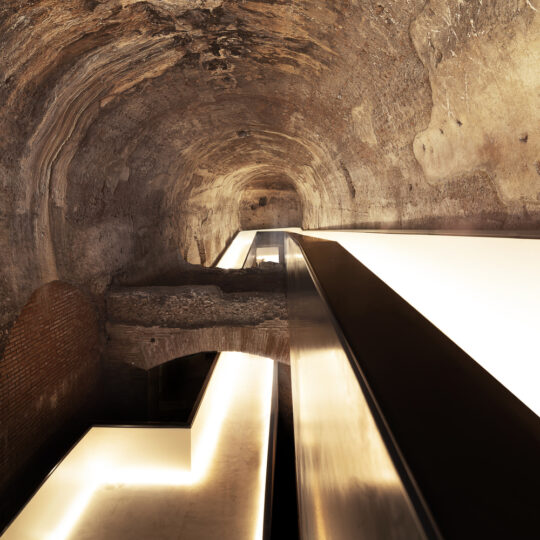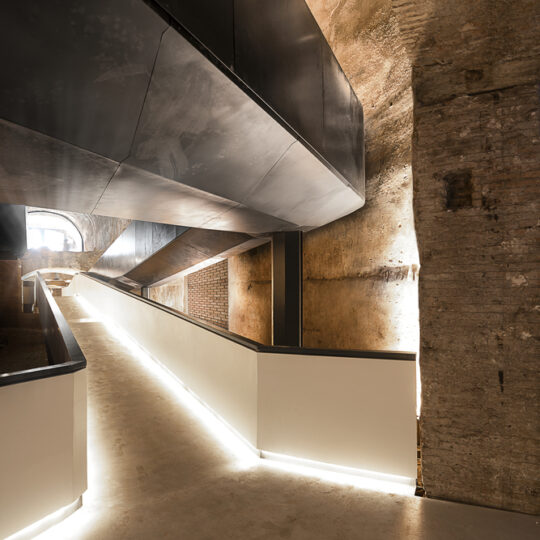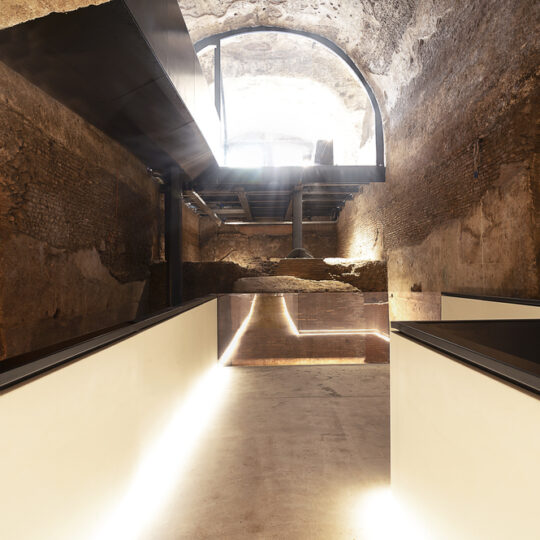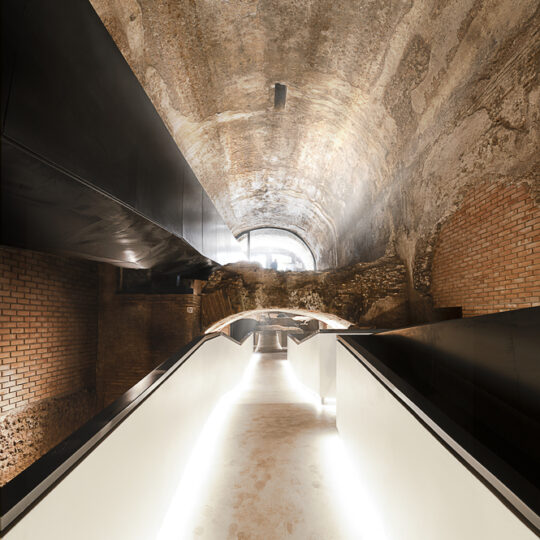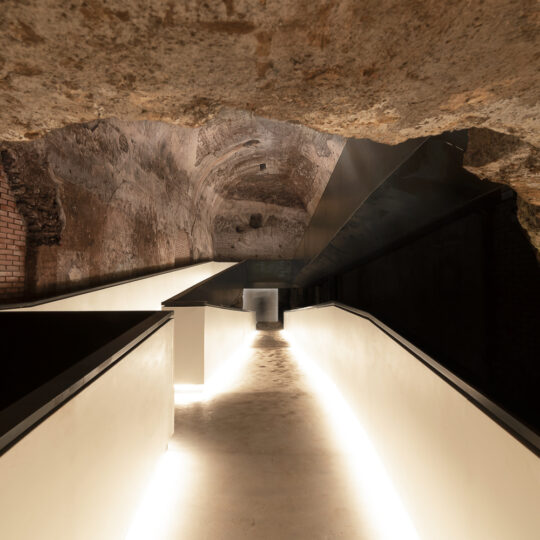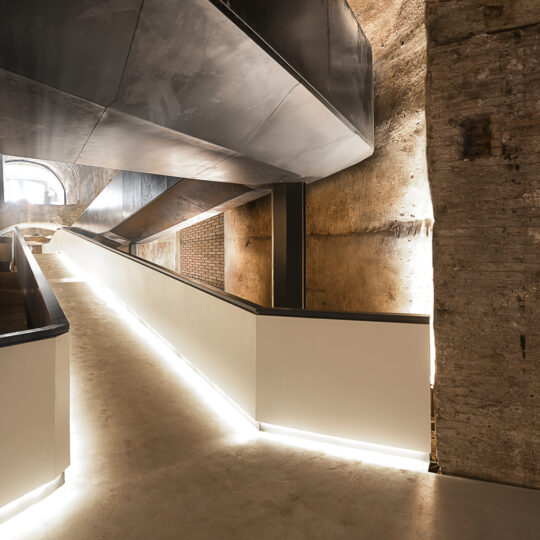Stefano Boeri Architetti completed the project of the new entrance to the Domus Aurea and of the pedestrian walkway to the Octagonal Room, promoted by the Archaeological Park of the Colosseum and produced by Electa.
The architects wanted to allow each visitor to explore the Neronian Villa and progressively discover the underground spaces, the original vaults above and the imprint of the thermal structures of Trajan period.
The gallery, where the pedestrian walkway is inserted, is conceived as a dark and contained space, in which a guideline of light accompanies the visitor through a historical tale of the ruins, suggesting the idea of a journey in search of the celestial vault that opens, with a large oculus, in the Octagonal Room.
The path is divided into three parts – Vestibule, Milky Way and Landing – which makes it possible to connect the Colle Oppio park and the ancient pavement of the Octagonal Room, almost six meters lower.
The walkway that creeps between the ruins, on the verge of touching them, is completely independent from the existing walls, paying particular attention to such a delicate environment, where artisan and entirely manual installation must be carried out.
The entrance portal is designed to highlight the location of the access point and is based on a system of openings and closings that incorporate both the access doors and the security system, highlighting materials such as galvanized and painted black steel sheet, in contrast with the brushed bronze details.
The Vestibule houses a space dedicated to bookshop and ticket offices, overlooking a window that allows the visitor to have an overall view of the walkway that stretches into the gallery below, in the image of a Milky Way that illuminates the space in every detail.
In addition, a delicate play of lights allows the perfect usability of the entire path: the use of LED strips accentuates the linearity of the design, making the white resin finishes that cover the walking surfaces and the internal vertical portions of the parapets shine, while enhancing, through carefully positioned light points, the historical elements below.
The supporting structure of the pedestrian walkway – accessible to all visitors – is made up of HEB metal profiles covered with a galvanized and painted smooth sheet profile which, by optical illusion, masks its industrial dimensions and features.
The result is a delicate but also immersive intervention that brings the visitors to the final point of access to the Octagonal Room, where a neutral vertical panel that can, from time to time, become a perfect frame for the projection of images and videos to tell the story of the Villa, one of the country’s archaeological treasures.


